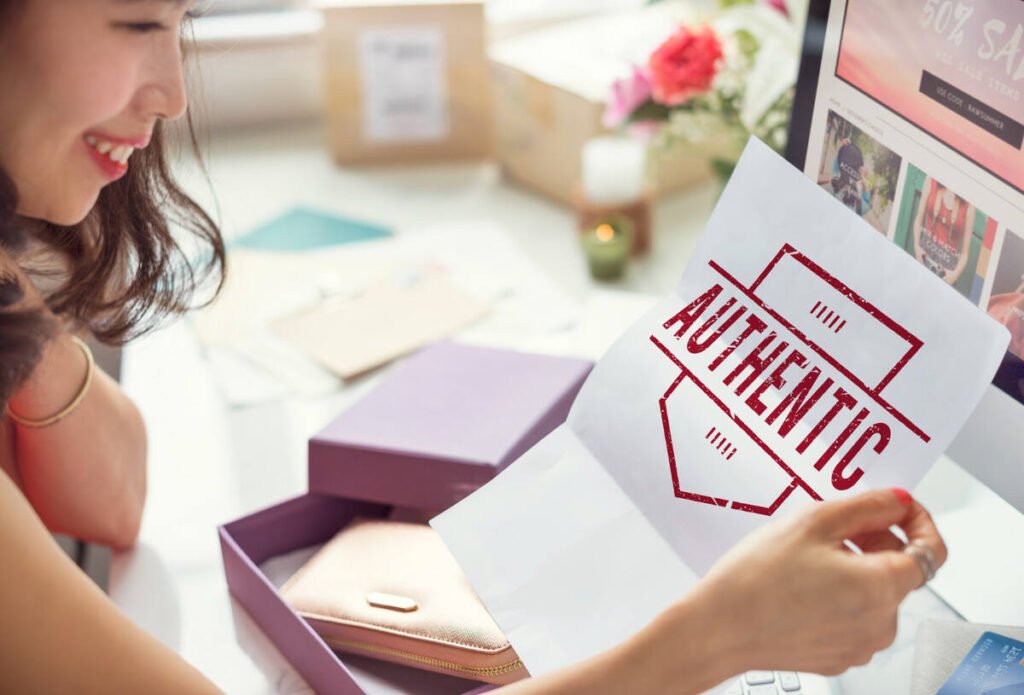Physical Address
304 North Cardinal St.
Dorchester Center, MA 02124
Physical Address
304 North Cardinal St.
Dorchester Center, MA 02124

Purchasing designer goods is not just about luxury or fashion—it’s an investment in quality, craftsmanship, and timeless style. Unfortunately, the increasing sophistication of counterfeit items has made it more challenging than ever for consumers to discern authenticity. Buying counterfeit products can lead to disappointment, wasted money, and even ethical issues. Understanding how to spot fake designer products is crucial to ensure your hard-earned money is spent wisely. Here are six shocking signs that indicate you’re dealing with counterfeit designer goods and how to avoid falling victim.
One of the most obvious indicators of counterfeit designer items is suspiciously low pricing. Authentic luxury products come at a high cost because they reflect high-quality materials, skilled labor, and reputable branding. If a designer bag, watch, or garment is offered significantly below its usual market value, this is a clear red flag. Scammers often use attractive pricing to lure unsuspecting buyers into purchasing inferior counterfeit items.
Before purchasing, compare prices from authorized retailers or trusted platforms like Net-a-Porter or Farfetch. Remember, genuine luxury rarely comes at a steep discount.

Designer brands take immense pride in their meticulous craftsmanship, precise stitching, and exceptional materials. Fake products, however, often exhibit clear signs of inferior quality. Look closely at stitching patterns, fabric quality, and the overall finish. Authentic items have uniform stitching, flawless edges, and sturdy materials, while counterfeit products frequently show irregular stitching, loose threads, uneven seams, or glue residue.
To ensure authenticity, inspect products thoroughly and consider buying from reputable sources like official brand boutiques such as Louis Vuitton or Gucci.
Designer brands invest significantly in consistent and precise branding. Logos, fonts, tags, and labels on genuine products are always impeccable. Counterfeiters, on the other hand, frequently produce items with misspelled logos, incorrect fonts, or inconsistent spacing. Authentic items have clear, crisp logos, evenly spaced lettering, and carefully attached tags or labels.
Always cross-reference products with official brand websites and reputable fashion sources such as Vogue or Harper’s Bazaar to confirm accuracy in branding.

Authentic designer products usually include documentation such as authenticity cards, serial numbers, care booklets, and branded packaging. These documents reinforce the legitimacy and origin of your item. Counterfeit products either lack these documents altogether or include poorly fabricated versions with noticeable spelling errors, incorrect details, or misaligned text.
Always ensure the product you buy is accompanied by proper and detailed documentation. When shopping for designer goods, choose authorized dealers or official stores to guarantee authenticity.
Genuine luxury items often contain unique identifiers such as serial numbers, specially colored linings, branded hardware, and distinct patterns. Counterfeit items commonly fail to replicate these precise details accurately. Fake products may feature incorrect serial numbers, mismatched lining colors, or poorly engraved hardware.
Compare details against authentic references provided by official brand websites like Chanel or Hermès to confirm authenticity.

Buying from unauthorized, unverified, or suspicious sellers significantly increases the risk of purchasing counterfeit items. Counterfeit goods are frequently sold through questionable websites, social media marketplaces, or unauthorized street vendors. Legitimate retailers maintain transparent business practices, verifiable business addresses, clear return policies, and excellent customer service.
To minimize the risk of counterfeit purchases, always choose reputable sources like established department stores, verified online platforms, or official brand websites.
Stick to trusted sellers, authorized boutiques, and reputable online marketplaces. Official websites, luxury department stores, and verified retailers offer guaranteed authenticity and peace of mind.
Before buying luxury goods, conduct detailed research on product specifications, pricing, and the authorized dealers. Knowledge about the specific brand’s characteristics and common details significantly reduces the chance of being deceived by counterfeits.
Pay close attention to every product detail, including stitching, hardware, lining, logos, and packaging. Even subtle irregularities could indicate a counterfeit product.
If unsure about a product’s authenticity, consider consulting a professional authentication service. Experts can reliably distinguish genuine designer goods from counterfeit versions.
Avoid making hasty decisions based solely on attractive pricing. Take your time to carefully evaluate each product, verify authenticity, and confirm seller credibility.
Always check the seller’s return and refund policies. Reliable retailers usually offer fair, clear, and generous return options. A questionable return policy may indicate a less-than-legitimate seller.
Purchasing genuine designer goods is an investment that requires careful consideration and vigilance. By being aware of these six shocking signs of counterfeit products, you can significantly reduce your risk of being deceived. Prioritize purchasing from trustworthy sources, meticulously check every detail, and stay informed to confidently identify authentic luxury goods. This vigilance protects your investments, ensures superior quality, and contributes to ethical and responsible consumer practices.